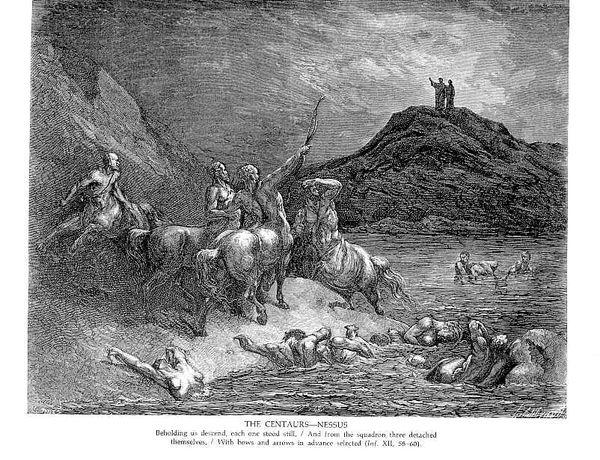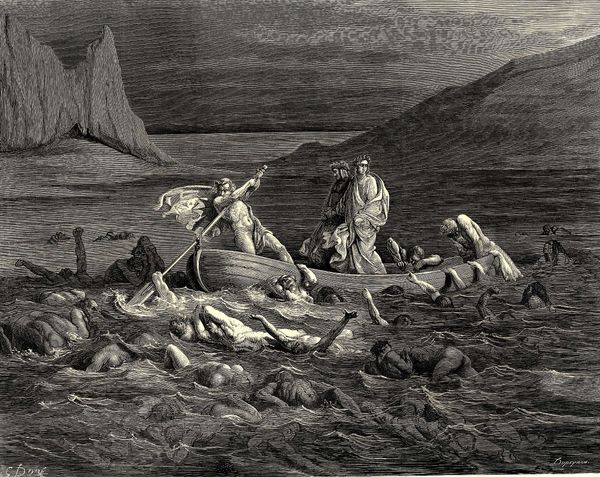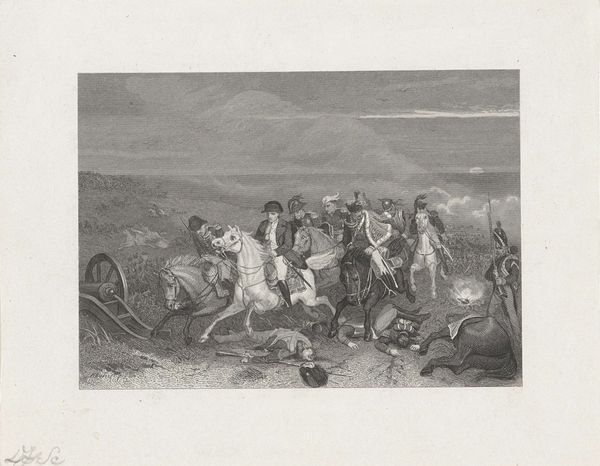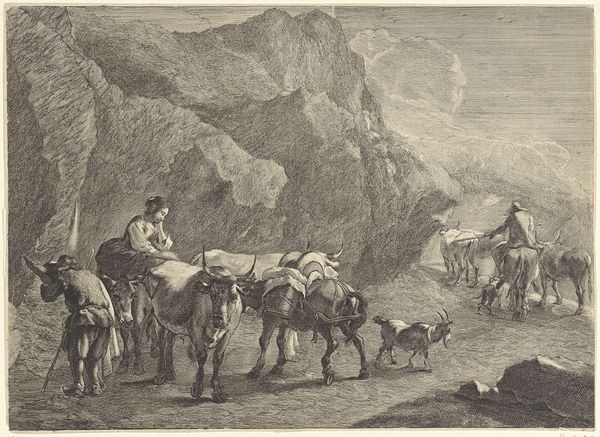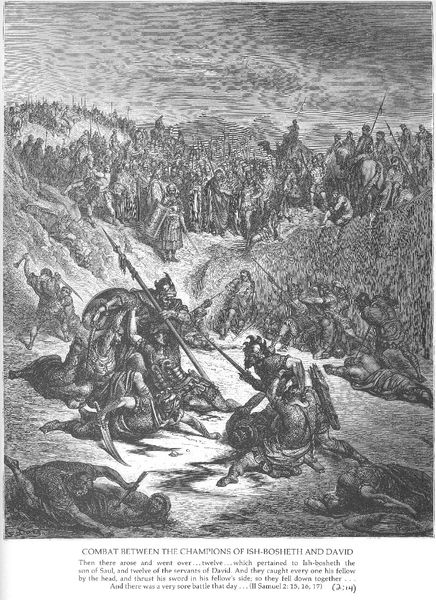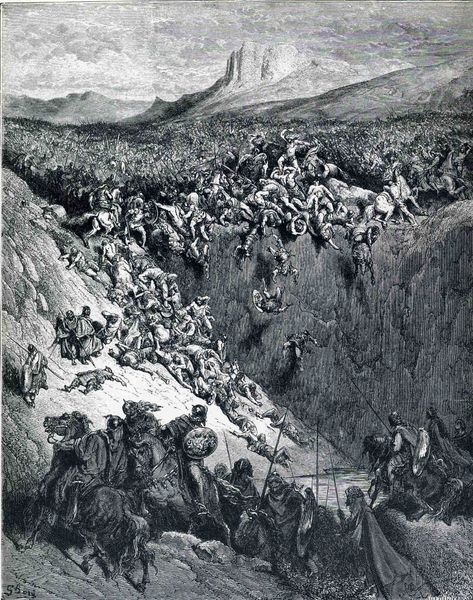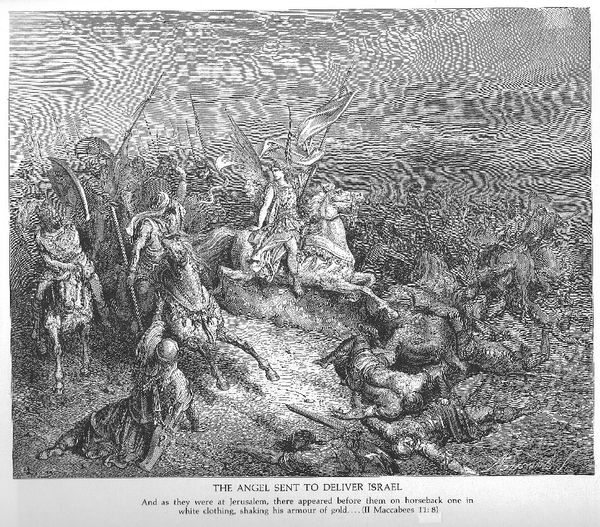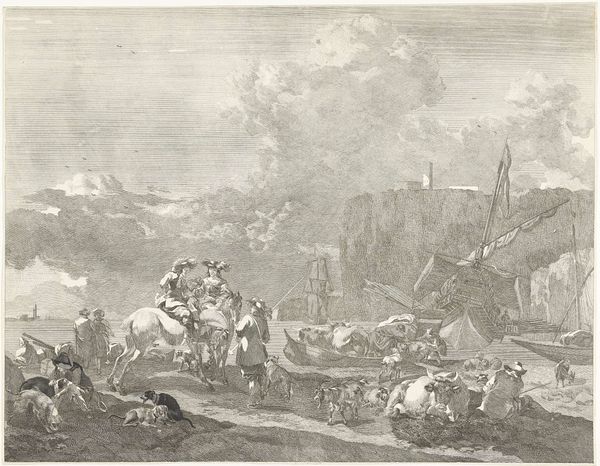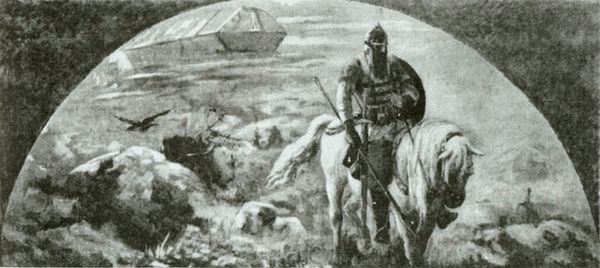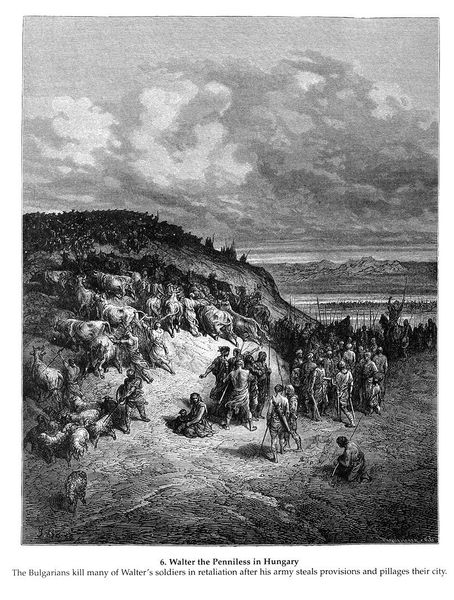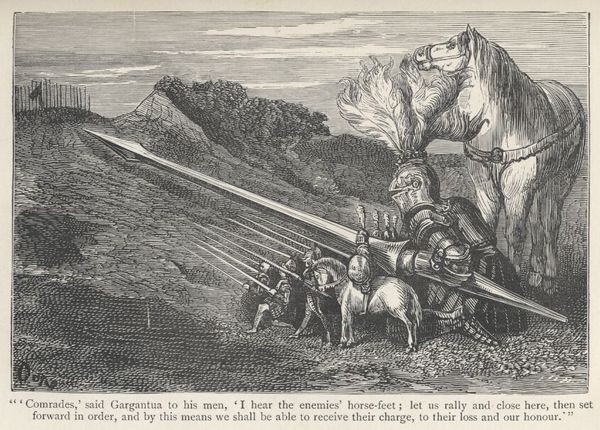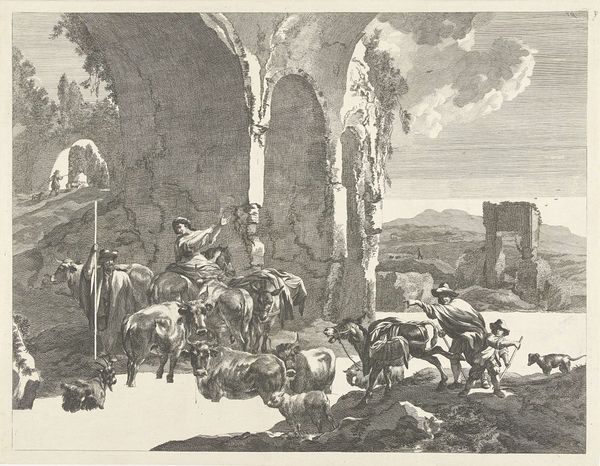
drawing, charcoal, engraving
#
drawing
#
fantasy concept art
#
narrative-art
#
pencil sketch
#
sculpture
#
landscape
#
charcoal drawing
#
figuration
#
romanticism
#
surrealism
#
line
#
charcoal
#
history-painting
#
engraving
Copyright: Public domain
Editor: This engraving is titled *The Inferno, Canto 12* by Gustave Doré. The figures almost seem to emerge from the dark depths of the image. There's a real sense of drama here, and I'm curious to know, what aspects of history might be relevant to understanding Doré's portrayal? Curator: It’s useful to think about the role of illustration in 19th century public life. Engravings like these weren't just art objects; they were a vital form of visual communication, bringing literary works to a wider audience. Consider the social function of illustrating Dante's *Inferno* – what kind of collective anxieties or moral lessons might it have been reinforcing, and for whom? Editor: So, it’s less about Doré’s personal vision, and more about the values that resonated with the public viewing these images? Curator: Not exclusively, but it's important to remember that Doré was working within a specific publishing industry, catering to a readership with its own expectations. How do you think this method of widespread image dissemination influenced people’s view of morality and justice? Editor: It’s fascinating to consider how this image would reach diverse audiences through prints, shaping a common visual language around sin and punishment. Thinking about accessibility adds another layer to its meaning. Curator: Precisely. And think about the institutions involved: publishing houses, galleries displaying original drawings, even schools using these images for educational purposes. All contribute to how the *Inferno* and images like these get interpreted and circulate within society. What social class would most likely have access to such images? Editor: The rising middle class, probably. They’d be the ones buying the books and prints, which suggests this imagery played a role in shaping their values. Thank you, that's given me a lot to think about in terms of cultural influence! Curator: It works both ways. Recognizing the cultural significance and public role of imagery helps us interpret any piece within a richer, more connected historical frame.
Comments
No comments
Be the first to comment and join the conversation on the ultimate creative platform.
